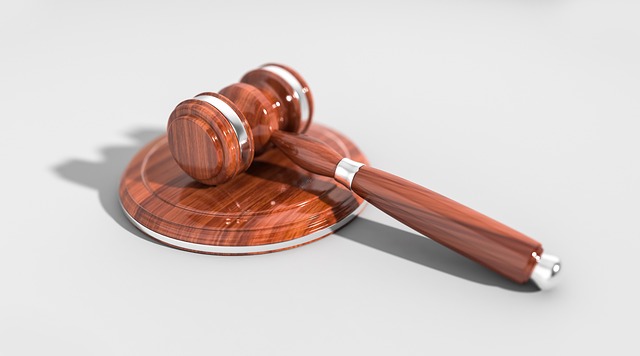Uncovering Corporate Crime: Protecting Employee Rights in Violations

Corporate crime investigations require a balanced approach to uncover fraud and violations while res…….
In the ever-evolving global workforce, ensuring employee rights and protections under labor law violations is an essential aspect of fostering fair and ethical work environments. This comprehensive article delves into the intricate world of employee entitlements when faced with potential or actual labor law infringements. By exploring various dimensions, from historical foundations to contemporary challenges, we aim to equip readers with a profound understanding of this critical subject matter. The following analysis will provide valuable insights into the global implications, economic considerations, technological influences, and policy frameworks that shape the rights of workers worldwide.
Definition and Core Components:
Employee rights under labor law violations refer to the legal protections and entitlements afforded to workers when their employers engage in unfair or illegal practices. These rights are enshrined in various international conventions, national laws, and regional regulations, collectively forming a robust framework to safeguard employees’ welfare. The core components typically include:
Historical Context and Evolution:
The concept of employee rights under labor law violations has its roots in the industrial revolution, when workers faced grueling conditions and exploited practices. The late 19th and early 20th centuries witnessed significant labor movements advocating for better wages, safer workplaces, and collective bargaining rights. Landmark events like the Haymarket Affair (1886) and the establishment of the International Labour Organization (ILO) in 1919 contributed to the formalization of labor rights globally.
Over time, these rights have evolved to address emerging challenges, such as the rise of technology, globalization, and changing work dynamics. For instance, the Universal Declaration of Human Rights (1948) incorporated labor rights as fundamental human rights, further solidifying their importance. International labor conventions, such as those on child labor, forced labor, and minimum age limits, have been adopted and implemented by many countries to protect workers’ interests.
International Influence:
The impact of employee rights under labor law violations is profoundly global, with international organizations like the ILO leading efforts to promote and protect these rights worldwide. The ILO’s conventions and guidelines serve as a blueprint for national labor laws, ensuring consistent standards across borders. This international framework facilitates the movement of goods, services, and people while upholding core labor rights, fostering a more equitable global economy.
Regional Variations and Challenges:
While there is a universal consensus on essential employee rights, significant variations exist in their implementation across regions. For instance:
Emerging Trends:
Several global trends shape the future of employee rights:
Market Dynamics and Investment Patterns:
Employee rights under labor law violations have a profound impact on economic systems, influencing market dynamics and investment decisions:
The Role of Labor Rights in Economic Development:
Promoting employee rights is not just a moral imperative but also an economic development strategy:
Impact on Employee Rights:
Technology has revolutionized the workplace, presenting both opportunities and challenges for employee rights:
Future Potential:
Technological advancements offer opportunities to strengthen and streamline employee rights protections:
Key Policies and Regulatory Frameworks:
The protection of employee rights is underpinned by a web of policies, regulations, and legislative acts:
Influence on Development:
The effectiveness of these policies varies across jurisdictions:
Main Issues Faced:
Despite significant progress, employee rights under labor law violations continue to face several challenges:
Proposed Solutions:
Addressing these challenges requires a multi-faceted approach:
1. Germany’s Co-Determination Law:
Germany’s Mitbestimmungsgesetz (Co-Determination Law) is a prime example of successful labor law implementation. This law grants employees significant voting rights in company decisions, ensuring their involvement in strategic matters. It has led to improved job security and higher employee satisfaction, contributing to Germany’s robust economy.
2. Australia’s Equal Pay Act:
Australia’s Equal Pay Act 1975 is a landmark piece of legislation that addresses the gender pay gap. By mandating equal pay for work of equivalent value, the act has fostered greater fairness in the workplace and inspired similar initiatives globally.
3. Denmark’s Flexicurity Model:
Denmark’s labor market is characterized by the “flexicurity” model, combining flexible employment with robust social security. This system allows businesses to adapt quickly to changing market demands while ensuring employees have access to benefits during transitions. The result is a low unemployment rate and high job satisfaction.
Emerging Growth Areas:
The future of employee rights under labor law violations holds several promising avenues:
Strategic Considerations:
To navigate these prospects effectively:
Employee rights under labor law violations are a cornerstone of modern work dynamics, shaping the relationship between employers and employees globally. This article has explored various aspects, from historical foundations to future prospects, highlighting the complex interplay between legal protections, economic systems, and technological advancements. As the world of work continues to evolve, so must the frameworks governing employee rights, ensuring fair treatment, safety, and dignity for all workers.
Q: How do labor laws differ across countries?
A: Labor laws vary significantly from country to country, reflecting their unique cultural, economic, and political contexts. Some nations have comprehensive protections, while others have more limited frameworks. International conventions aim to establish minimum standards, but local laws often provide additional safeguards or variations.
Q: What are the primary benefits of strong employee rights?
A: Strong employee rights lead to numerous advantages, including improved job satisfaction, reduced turnover rates, increased productivity, and lower recruitment costs. They also foster a positive company culture, enhance brand reputation, and contribute to economic growth by creating a more skilled and stable workforce.
Q: How can technology help enforce labor laws?
A: Technology offers tools for monitoring workplace conditions and ensuring compliance with labor laws. AI-powered systems can analyze data to identify potential violations, while blockchain technology enhances transparency in global supply chains. Digital platforms also facilitate collective bargaining and union organization, empowering employees.
Q: What are some common challenges faced by workers in developing countries?
A: Workers in developing countries often face challenges such as low wages, long working hours, unsafe conditions, and limited access to social protections. Child labor, forced labor, and discrimination are also persistent issues that require targeted interventions and policy reforms.
Q: How can employees protect their rights in the gig economy?
A: Gig workers can protect their rights by understanding local labor laws, organizing with fellow workers, negotiating terms, and documenting working conditions. Platforms like independent worker unions or digital platforms for collective bargaining can also provide support and representation.

Corporate crime investigations require a balanced approach to uncover fraud and violations while res…….

Labor laws protect workers from exploitation by regulating minimum wage, overtime, child labor, disc…….

Employee Rights Under Labor Law Violations are crucial for maintaining fairness and justice in crimi…….

Employee Rights Under Labor Law Violations protect workers from fraudulent business activities like…….

Healthcare Law Firms play a vital role in protecting Employee Rights Under Labor Law Violations by o…….

Environmental Crime Trials tackle legal intersections of environmental protection and criminal justi…….

Employee Rights Under Labor Law Violations protect workers from unfair treatment like wage discrimin…….

Healthcare law firms specialize in guiding healthcare providers through complex medical regulations,…….

The RF Securities Industry Regulation Framework is a stringent system for maintaining fairness and i…….

Consumer Protection Suits and Employee Rights under Labor Law Violations are vital legal areas ensur…….